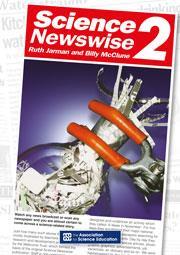Trevor Critchley reviews this text dedicated to bringing the news into science lessons
Ruth Jarman and Billy McClune
Hatfield, UK: Association for Science Education 2011 | Pp180 | £30 | ISBN 978 086 357 430 6
Reviewed by Trevor Critchley

I heartily recommend this excellent resource. It is a comprehensively researched book which warrants a lengthy read before you dive in. It won't be terribly effective if you just want quick off the shelf resources to slot into your lesson next Monday. The authors make a compelling case for including science stories from the media into lessons and give a good range of them to start with.
The chapter Using the news to teach science content is unsurprisingly short. Scientists don't usually expect much factual detail from the mainstream media. The three resources in this chapter are very good and provide some interesting contexts for learning. For example, an article on tooth decay suggests a neat way to look at the pH scale, and there are good ideas for linked practical work.
Where this book excels is in presenting the case for using news articles to cover How Science Works, and there are two detailed chapters on this. The approach is well-justified, backed up by surveys of current practice and the resources are relevant and engaging. I particularly liked the chapter The science behind the headlines, where students are asked to provide the scientific detail to back up a general interest article relating to transport and climate change. This is a very transferable idea.
The final and longest section of the book looks at how science is represented in the media. I was initially going to pull out this part and drop it off in our English department, but the authors give several better ideas for possible collaborative projects across the curriculum and I find myself strongly agreeing with them. With a greater emphasis on the quality of written communication in the new GCSE specifications, there is good reason for students to engage with scientific articles from the point of view of style and message.
Related Links
Purchase this resource from the publisher






No comments yet